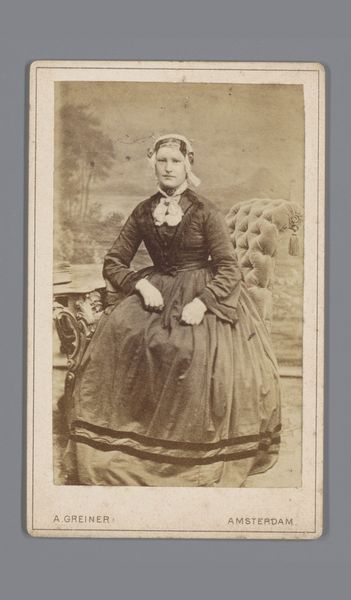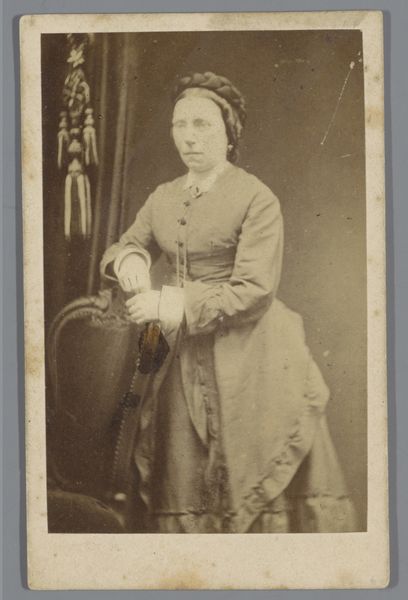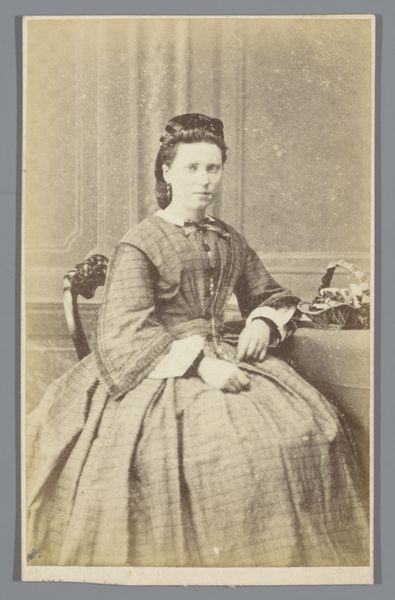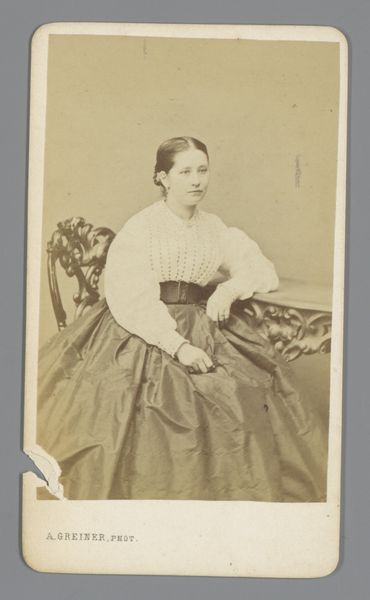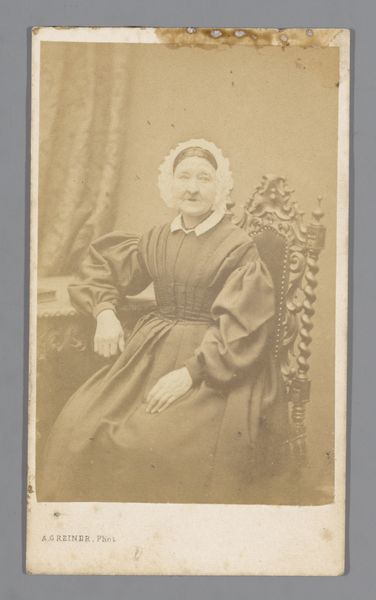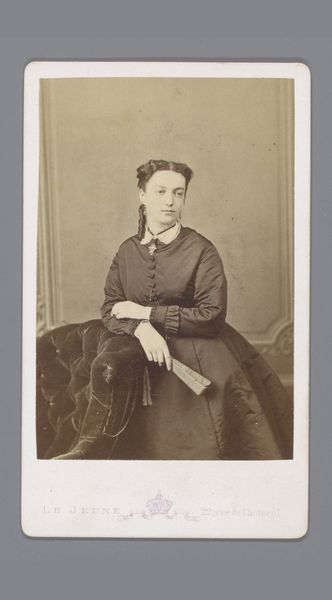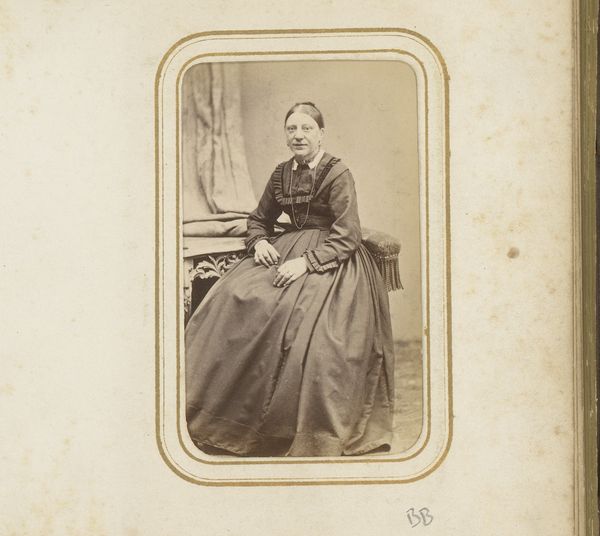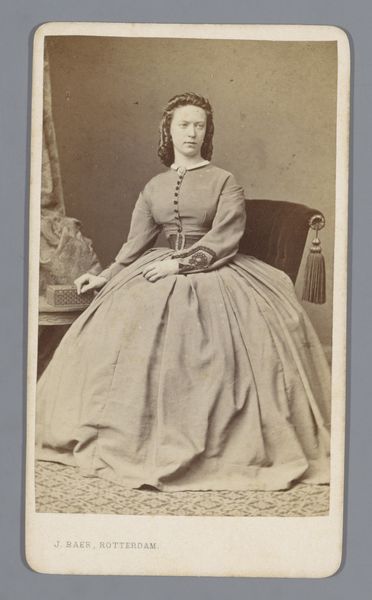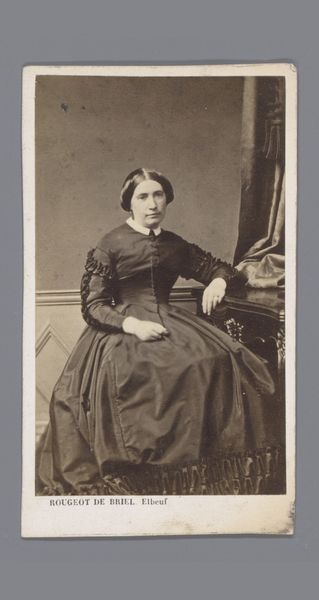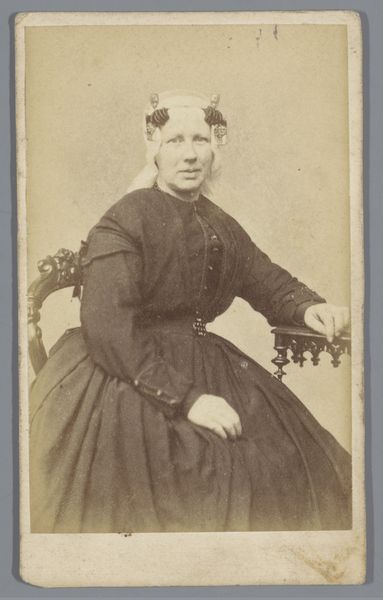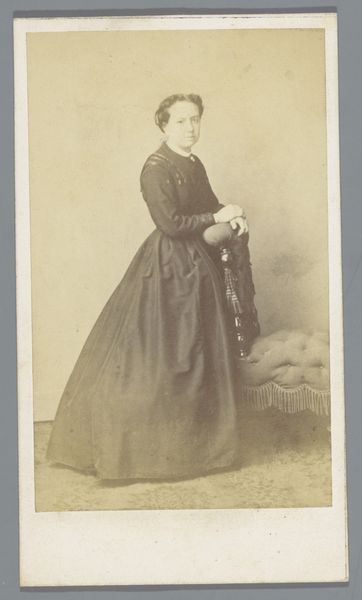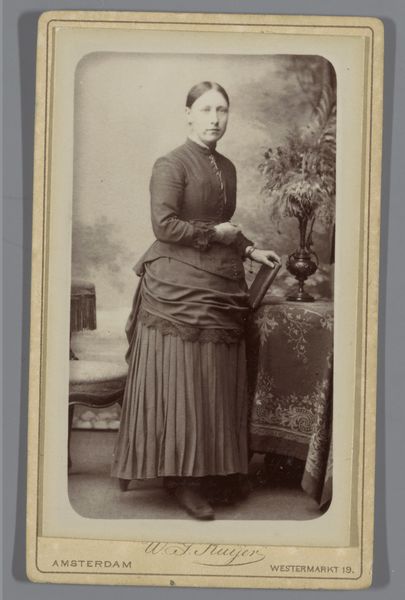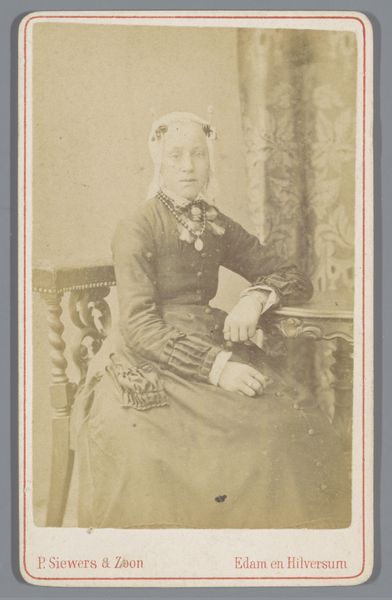
photography, gelatin-silver-print
#
photography
#
gelatin-silver-print
Dimensions: height 95 mm, width 62 mm
Copyright: Rijks Museum: Open Domain
Editor: This photograph, "Portret van een onbekende vrouw bij bloementafel," by Fritz Ridiger, is a gelatin-silver print, dating from about 1860 to 1889. The muted tones give it such a quiet, almost melancholic feel. What can you tell me about how this type of portrait photograph became popular in its time? Curator: These portraits offered a relatively affordable way for a broader segment of society to participate in image-making and presentation of self. We often forget the powerful socio-political function of even a simple portrait. Its role extends far beyond just representation. Consider how photography democratized portraiture. Who had access to painted portraits beforehand, and how did that shape societal power dynamics? Editor: Before photography, painted portraits were reserved for the wealthy. Now, suddenly, a wider group of people could participate. Curator: Exactly! And consider the studio setting: the woman’s dress, her pose, even the flowers, were all carefully staged. This speaks to a specific construction of identity that was being popularized, an emerging middle-class ideal of respectability and domesticity. How does that domestic context reflected in the photograph influence our interpretation? Editor: It definitely suggests she valued presenting herself as someone cultured and settled. Does the gelatin-silver process affect how we perceive it today? Curator: Absolutely. It allowed for mass production and affordability. So, while she might seem ordinary to us, back then, owning this photograph might have been an aspirational act, signalling inclusion in a burgeoning visual culture. It's a small snapshot – pun intended – of profound social shifts. Editor: That gives me a lot to think about! I didn’t consider the social impact beyond just “taking a picture.” Curator: The technology influenced culture and politics by how and by whom that image was spread, viewed, and discussed. It became a crucial, accessible art form.
Comments
No comments
Be the first to comment and join the conversation on the ultimate creative platform.
